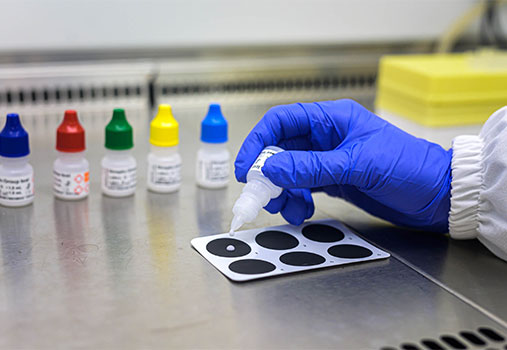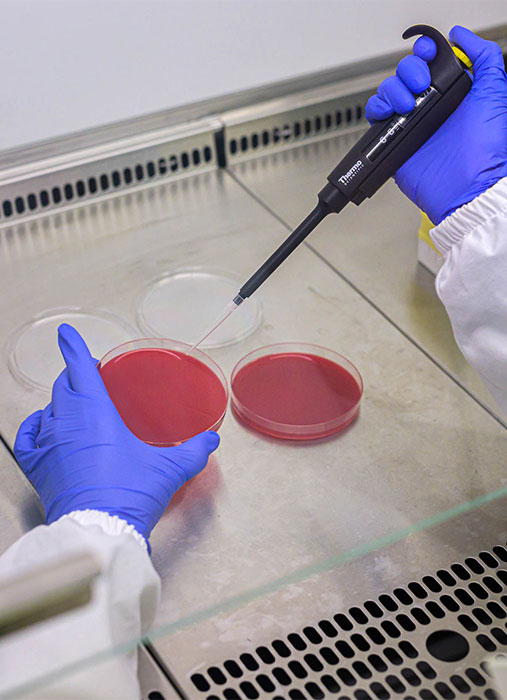- ProductsCoagulationCoagulationClinical Chemistry and Specific ProteinsClinical Chemistry and Specific ProteinsSerology and BacteriologySerology and Bacteriology

Home » Serology and Bacteriology
Sclavo’s well-known worldwide reputation dates back to the early 1900’s as a pioneer in the microbiology field (bacterial identification, research and development of kits for the serological diagnosis of pathologies caused by microbial agents: this tradition continues.
We offer simple, ready to use manual kits for the serological diagnosis of infectious diseases and the typing of several microorganisms.

The complete solution for serological diagnosis of typhoid and paratyphoid infections, brucellosis, rickettsiosis and listeriosis.
Reliable: rigorous controls on the antigenic characteristics of bacterial strains used guarantee high sensitivity and specificity of the reaction.
Easy interpretation: the stable, coloured bacterial suspensions allow unequivocal readings in both the rapid slide tests and the microplate titrations.
Concordance of results: the results obtained with the rapid test and with the microplate titration method are in agreement with the reference
Test-tube method.
Sclavo, as a reference partner for the clinical laboratory with a strong experience in In Vitro Diagnostics, offers
a complete line of reagents devoted to the study in Bacteriology.
STREPTO GROUP TEST
Rapid: the positive reaction is generally evident within one minute.
Accurate: the sensitized reagents are specific for the single groups and do not give any cross reactions.
Easy: the interpretation of agglutination of the white latex on the black reaction slide facilitates reading of the results.
Complete: the kit contains all the materials necessary for the execution of the test, including positive and negative controls.
STAPHYLO RAPID TEST
Rapid: the positive reaction becomes evident with most strains within one minute.
Accurate: highly sensitive even wih Methicyllin-resistant S. aureus (MRSA).
Easy: the interpretation of agglutination of the white latex on the black reaction slide facilitates reading of the results.
Where we are: Via Po 26/28 Località Pian dei Mori 53018 Sovicille (Siena).
Contact us: telephone: + 39 0577 39041
E-mail: sclavoexport@sclavo.it
Subscribe to receive our latest updates about services, events and products.